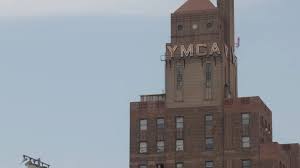In a bustling urban landscape, Harlem stands as a time-honored neighborhood renowned for its rich culture and complex history. The safety of this vibrant New York City enclave has been a subject of intricate inquiry, shaped by its transformative journey from a rural village to an urban center. This area’s narrative has been intricately woven with accounts of crime, community dynamics, and efforts to enhance safety and quality of life.

Photo from Google
Cultural Milestones and Socio-Economic Shifts
Harlem has been a hotbed of socioeconomic change and cultural turning points over the years. Its transformation from a Dutch town in the seventeenth century to the hub of the Harlem Renaissance solidified its status as a symbol of African-American history. In the 1920s and 1930s, Harlem experienced a cultural revolution never seen before, giving rise to legends like Duke Ellington and Langston Hughes and establishing the neighborhood as a center of music, literature, and the arts.
Amid discussions about gentrification and socio-economic changes, initiatives to address safety have been paramount in reshaping the neighborhood’s day-to-day experiences. Recent years have witnessed concerted efforts by local organizations and law enforcement to reduce crime and fortify the feeling of security and well-being. These endeavors have culminated in a dynamic mix of residents, businesses, and cultural institutions, fostering an environment that encourages mindfulness and a deep engagement with the diverse experiences Harlem offers.
A significant aspect of evaluating Harlem’s safety involves a comprehensive analysis of crime rates, distinguishing between violent and property crimes, and comparing these metrics with national averages. Crime statistics reflect the multifaceted nature of safety, offering a quantitative measure that residents and potential visitors can consider in their assessment of the neighborhood. The reported crime rates underscore the impact of efforts aimed at reducing crime, presenting a critical data point for those navigating the streets, parks, and public spaces of Harlem.
READ ALSO: Unveiling Delaware’s Most Dangerous Cities: Disturbing Trends In Crime Rates
Resilience, Adaptability, and the Neighborhood’s Future
Harlem’s trajectory, from the challenges post-Renaissance to the signs of gentrification in the late 20th century, has reflected the neighborhood’s resilience and adaptability. As it continues to evolve, its historical significance remains at the center of conversations about its future.
Visitors and potential residents are encouraged to approach Harlem with a sense of mindfulness, acknowledging the layered past and the transformative journey that continues to shape its cultural significance and neighborhood security.
READ ALSO: Exploring Nebraska’s 5 Most Dangerous Cities In 2023




![Tyson Foods Plant [Photo: Food Manufacturing]](https://southarkansassun.com/wp-content/uploads/2023/08/iStock_1185520857__1_.5e441daa51cca-600x337.jpg)







![Silverado Senior Living Management Inc. [Photo: Los Angeles Times]](https://southarkansassun.com/wp-content/uploads/2023/10/download-6-4-600x337.jpg)

![China's Wuhan Institute of Virology [Photo: Nature]](https://southarkansassun.com/wp-content/uploads/2023/09/d41586-021-01529-3_19239608-600x337.jpg)
















